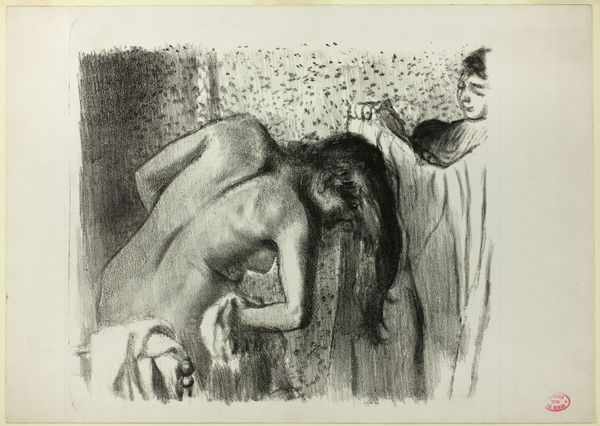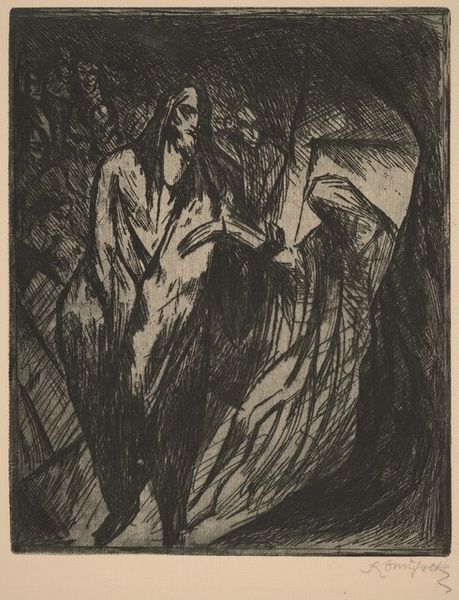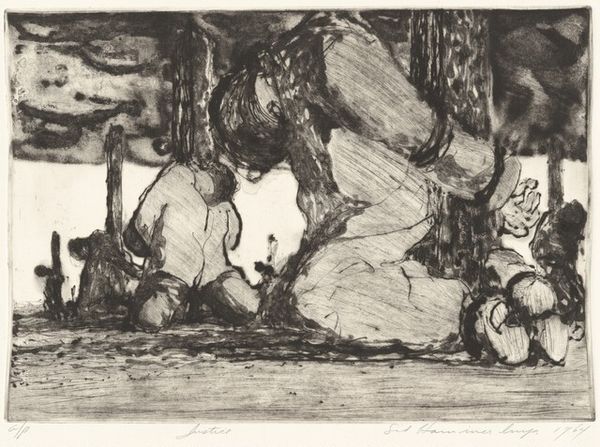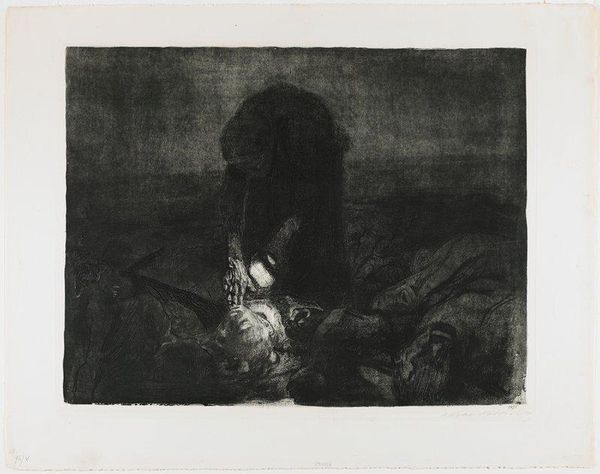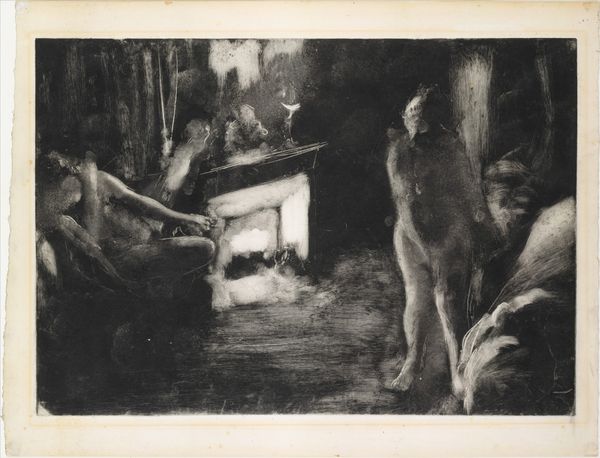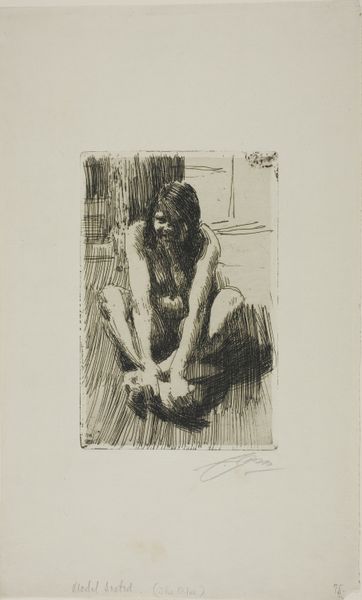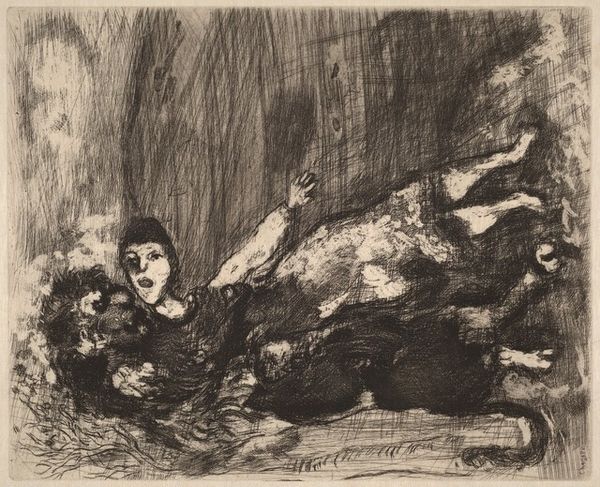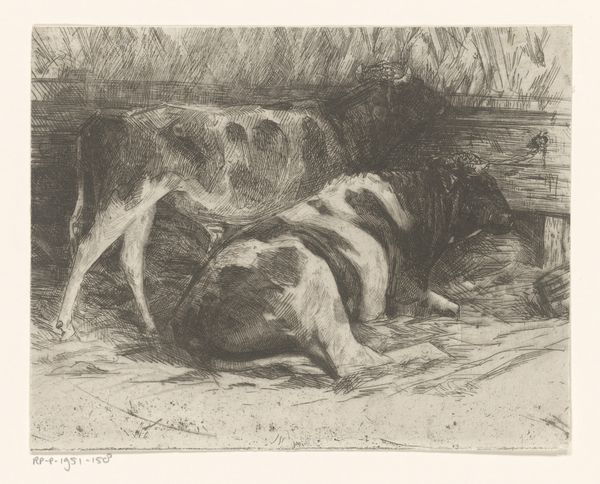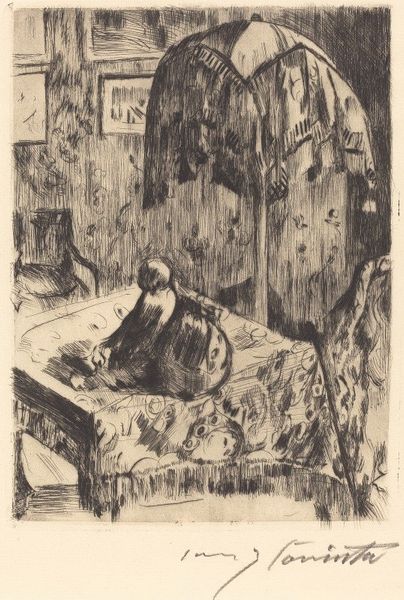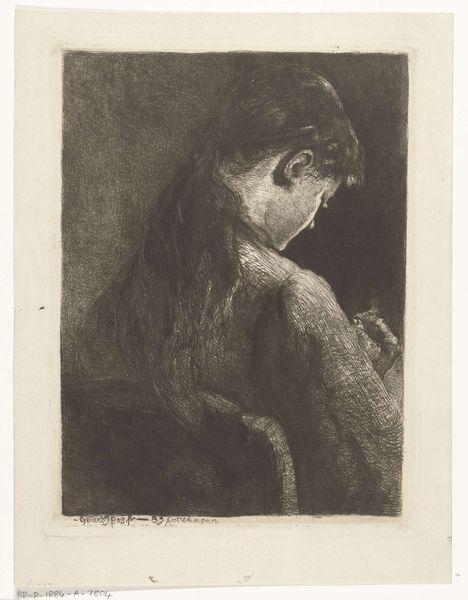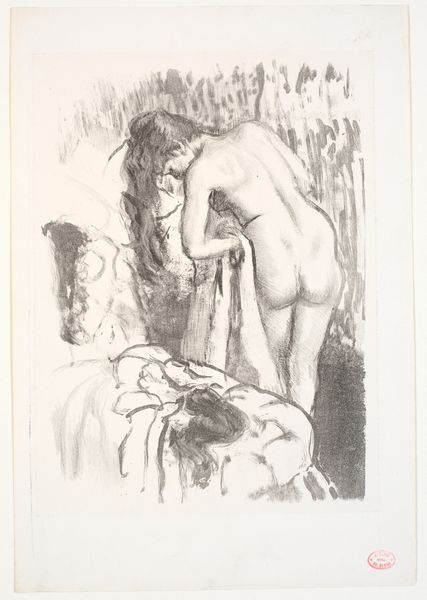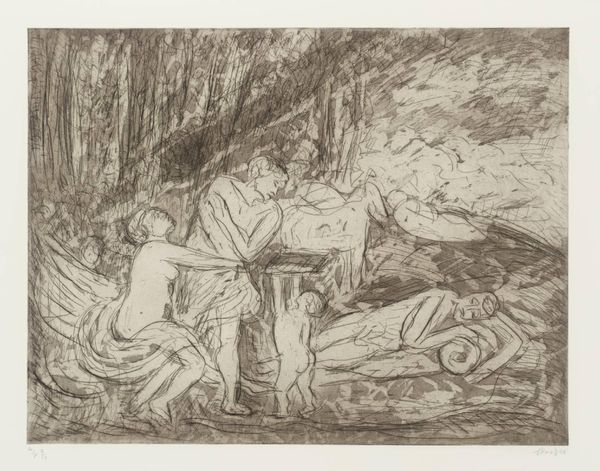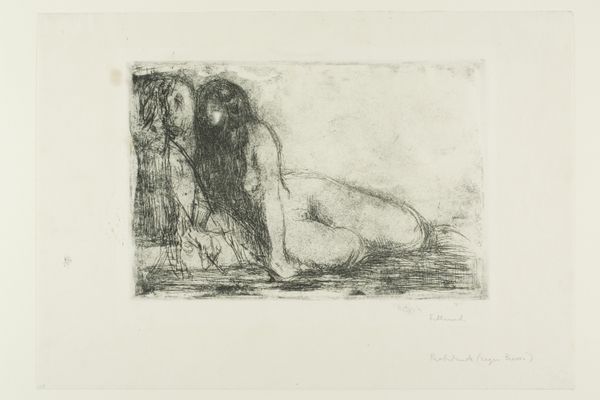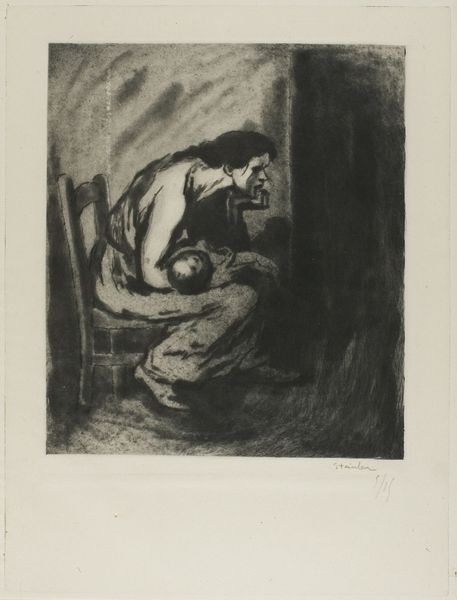
Dimensions: 17.6 x 21 cm
Copyright: Public domain US
Curator: Edward Hopper’s 1921 etching, "Evening Wind," strikes me as an unsettling piece, despite its domestic subject. There’s a palpable sense of loneliness. Editor: Hopper is definitely capturing a particular feeling, or a moment of experience that has layers. Before we go deeper, for those just joining us, can you set the scene and contextualize this etching? Curator: Certainly. "Evening Wind," housed here at the British Museum, uses etching to depict a nude woman kneeling on a bed, leaning toward an open window. Curtains billow inward, seemingly animated by the titular evening wind. Etchings like this provided a vital source of income for Hopper in the early years of his career. Editor: Income, yes, and access. A key part of its accessibility, as an etching made for mass consumption, is the intimacy of the nude female figure and domesticity in general, playing into social power dynamics concerning class and gender roles in the 1920s. We see how it portrays a private moment, but the medium exposes it to the public. Curator: The way Hopper handles light and shadow is really striking, as a commentary of power dynamics at play, framing, not simply about accessibility. There’s an interplay between the stark darkness of the interior and the implied openness of the outdoors. It suggests confinement alongside the desire for liberation. Editor: I would have to agree. Consider the voyeuristic aspect too; we’re invited into this intensely private moment. The woman is turned away, vulnerable, caught between inside and outside—it raises questions about consent and power dynamics. Her identity seems less relevant than the feeling being created. Curator: Right, and that ties to the broader cultural discourse of the period. This image was produced between two waves of feminism that each radically re-evaluated society’s perception of women, but that would go on to erase particular communities while serving others. In those years, debates about a woman's "place", sexuality and even agency were incredibly contentious, and that political dimension isn’t necessarily overt in Hopper, but is clearly, if unconsciously, implicated in how women are shown. Editor: Agreed, so it is both, Hopper captures both something about the period and the experience of living within it. Thank you, both!
Comments
No comments
Be the first to comment and join the conversation on the ultimate creative platform.
